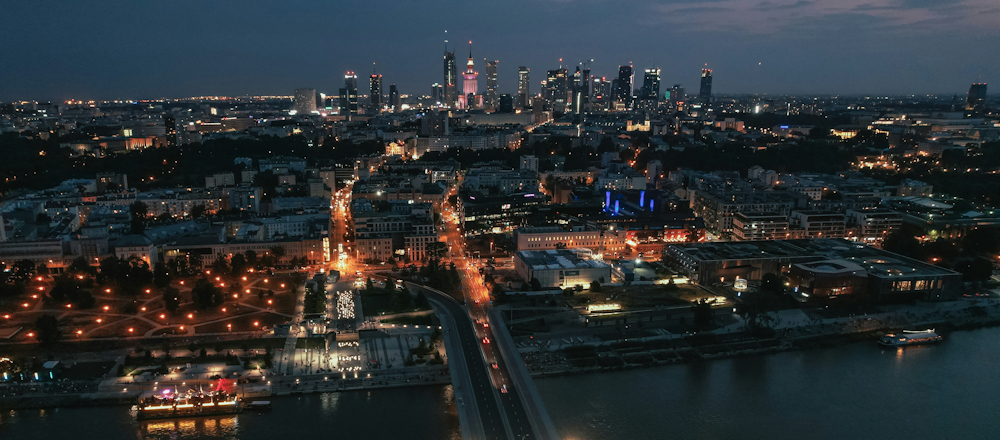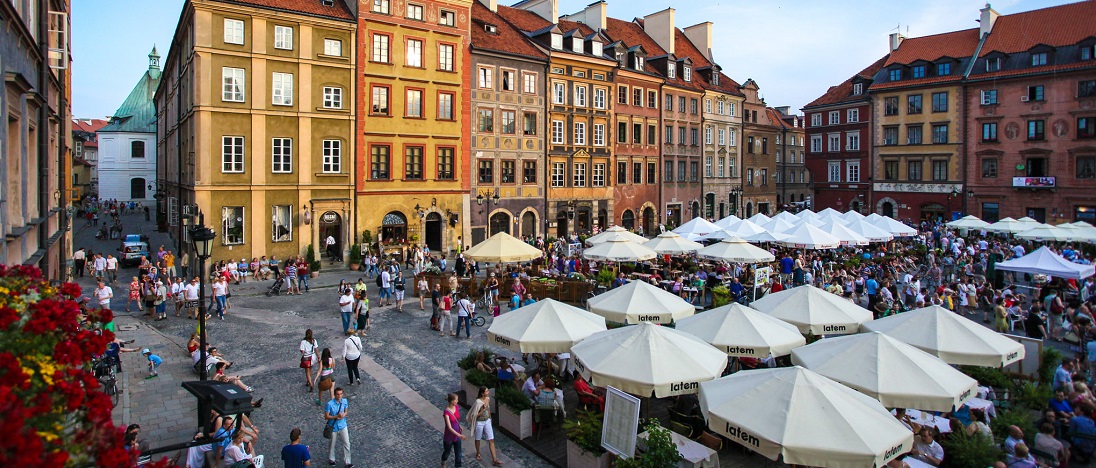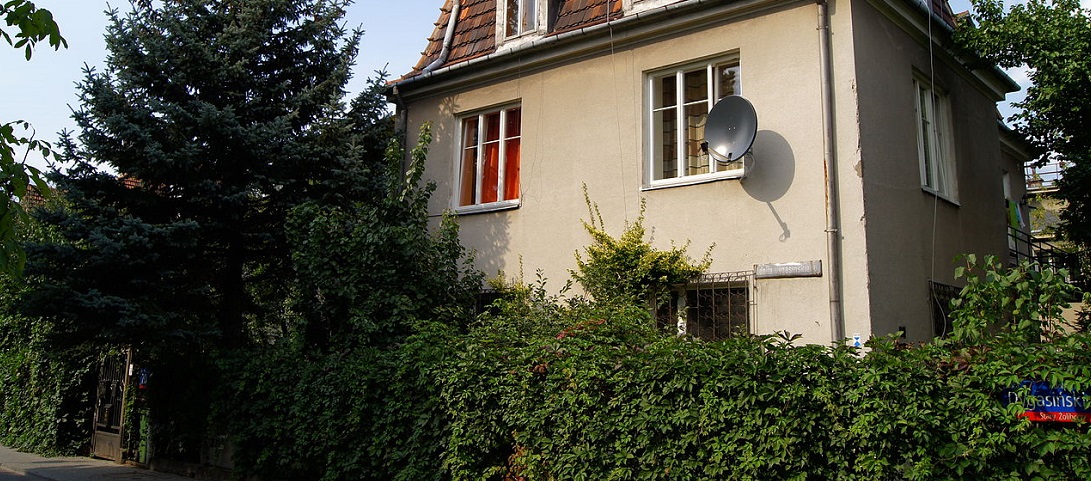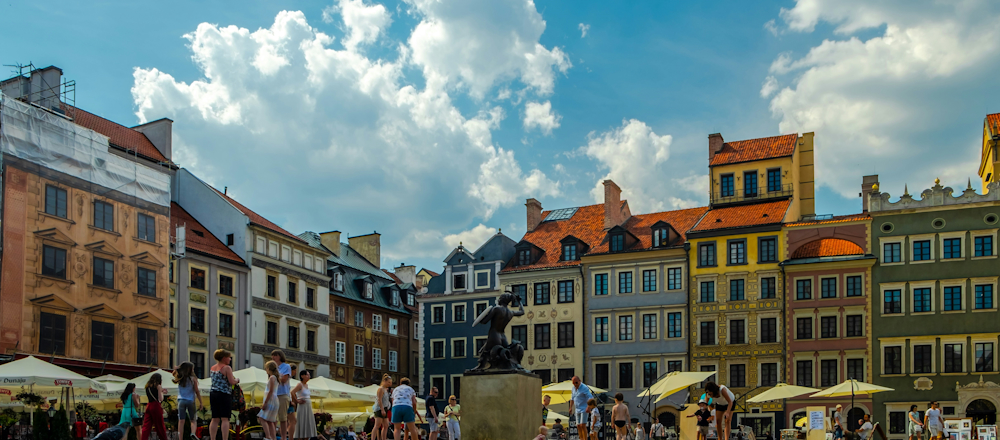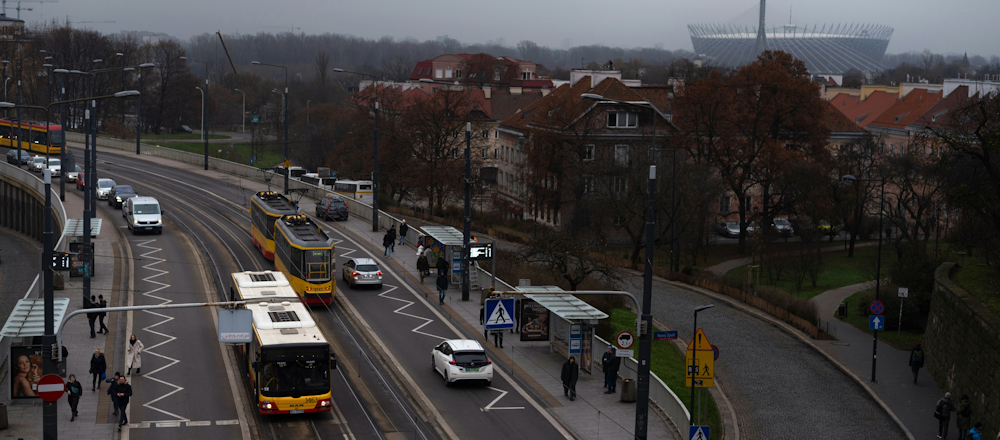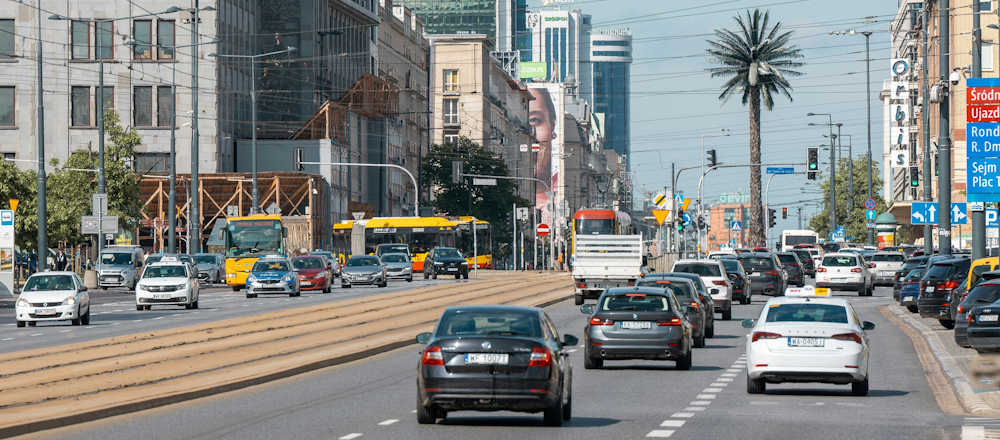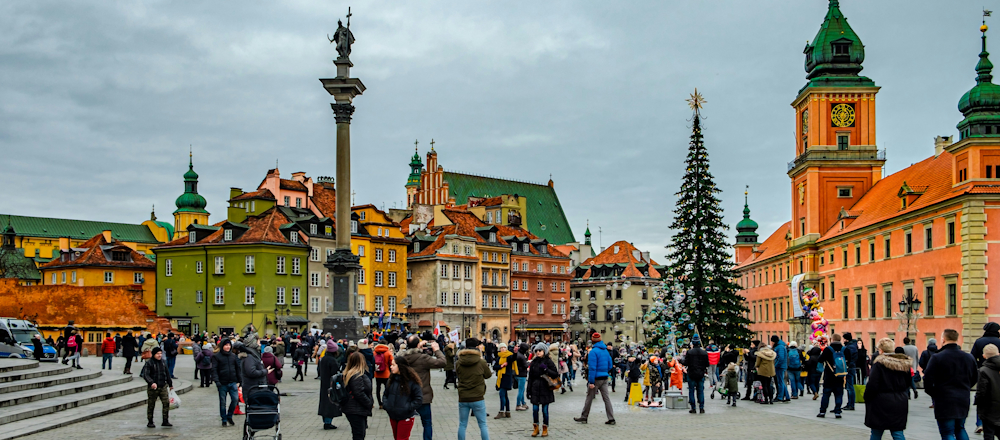When moving to Warsaw, you’re in for an exciting experience with a quality of life to match. Located on the banks of the Vistula River and characterised by magnificent old-world architecture and quaint town squares, postcard-pretty Warsaw is not only the capital but also the cultural and economic heart of Poland.
Living in Warsaw as an expat
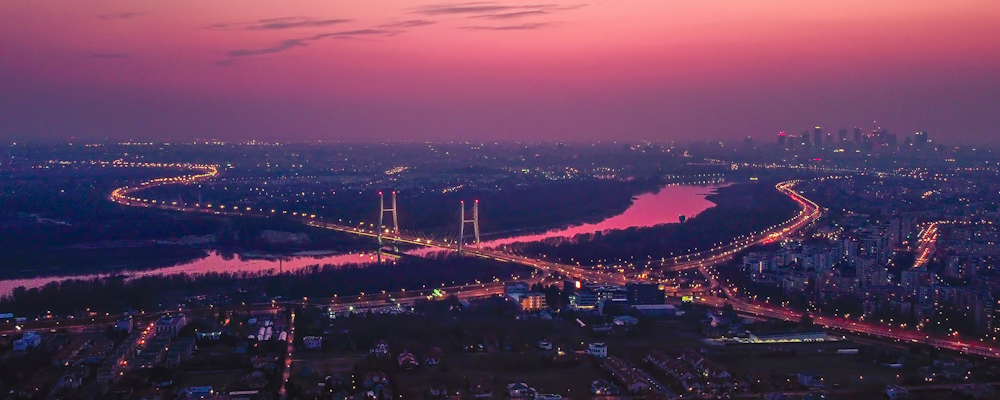
The city’s fitting motto – Contemnit procellas (it defies the storms) – perfectly captures what you’ll experience living in Warsaw as an expat. Warsaw has endured a turbulent history of invasions and occupations over the centuries, with the most devastating being the virtual levelling of the city by the Nazis during World War II.
The city still maintains its historic charm, with many of the ancient buildings that were destroyed during World War II restored to their former splendour. Gleaming skyscrapers and modern architecture now punctuate Warsaw’s skyline, standing alongside historical buildings from its Soviet era and earlier periods.
The expat community continues to grow, with Wilanów, Mokotów, and Żoliborz emerging as the most sought-after residential areas. Although learning some basic Polish phrases will go a long way in daily interactions, you’ll find the locals generally friendly and welcoming,
Working in Warsaw
Many qualified foreigners find rewarding work opportunities in Warsaw, particularly in the IT, finance, and technology sectors. The job market also shows strong demand for engineering, healthcare, and marketing professionals. Numerous international companies have established regional headquarters here, creating a diverse job market for expats with specialised skills.
Polish business culture tends to be formal and hierarchical. You’ll find that punctuality is valued, and business attire is typically conservative. While English is widely spoken in multinational companies, learning some Polish will definitely help with workplace integration. Remote work options have expanded significantly, with thousands of remote positions available across various industries.
Finding a Job in Poland
Visas and Residence Permits for Poland
Work Permits for Poland
Lifestyle in Warsaw

When it comes to the lifestyle in Warsaw, parks and green spaces abound, providing expats with endless outdoor options. With 20,000 acres of parks and woodland, more of the city is covered in greenery than any other European city.
A rich cultural scene awaits you in Warsaw with numerous theatres, museums, and music venues. The Old Town, meticulously rebuilt after WWII, is now a UNESCO World Heritage Site where you can enjoy charming cafés and restaurants.
Finding accommodation in Warsaw
Finding accommodation in Warsaw is complicated by seasonal price fluctuations, with the January–February and July–September months typically seeing higher prices. The city centre housing market in Warsaw moves quickly, with rental prices seeing a significant surge in recent years. Most expats rent rather than buy, at least initially. Apartments in the city centre tend to be smaller but well-connected, while the suburbs offer more space for families.
Landlords typically ask for one to three months’ rent as a deposit when signing a lease. Many landlords prefer long-term leases, usually for a minimum of 12 months. The apartment hunting process typically takes two to four weeks, so plan accordingly if you’re relocating.
Renting Accommodation in Warsaw
Best Places to Live in Warsaw
Cost of living in Warsaw
Compared to many other European capitals, there’s a relatively low cost of living in Warsaw, offering you a good standard of living at a reasonable price. Wages may not be particularly high, but the affordable cost of everyday expenses helps to balance the equation out.
Your most significant expense will likely be accommodation, especially if you live in the city centre. You can reduce your housing costs by moving to areas outside the city centre like Ochota or farther south to Konstancin. Utilities for a standard apartment will add to your monthly budget, as will groceries and transport. You can stretch your salary further by cycling to work and choosing outdoor entertainment activities which tend to be budget-friendly.
Living in Warsaw with children
Living in Warsaw with children will give you access to excellent amenities in what is Poland’s most family-friendly city. The most popular districts for expat families include Wilanów, Mokotów, and Żoliborz, each offering green spaces and good school access.
Children are welcome in most restaurants and public spaces. The city’s many parks become hubs for family activities during the warmer months, while winter offers indoor play centres and seasonal ice skating rinks.
Healthcare and Medical Insurance in Poland
Finding a school in Warsaw
There are several options for expats finding a school in Warsaw. Public schools are free to attend and generally offer an exceptional standard of education, but most expats send their children to one of the many international schools because of the language barrier.
There are some great international schools in Warsaw. However, these schools can have remarkably steep tuition fees, not counting additional costs like entry fees, uniforms, textbooks and extracurricular activities. Warsaw’s international schools typically offer curricula such as the International Baccalaureate, British, American, or French systems, allowing for educational continuity if you relocate again.
School and Education for Expats in Warsaw
International Schools in Warsaw
Getting around in Warsaw

The city’s well-developed public transport network makes getting around in Warsaw simple. The integrated system includes metros, trams, buses, and suburban trains that connect all the districts. With a single ticket, you can use multiple forms of transport within a set time period. Locals recommend using the jakdojade.pl app to navigate the city’s transport infrastructure.
Although it currently has just two lines, the metro system has ambitious expansion plans that will more than double its size. The city is also becoming more bike-friendly, with an expanding network of cycle lanes and a public bike-sharing system available from spring to autumn. From mid-2024, older cars will be banned from the city centre as part of a ‘clean transport zone’ initiative.
Public Transport, Driver’s Licences and Driving in Warsaw
Climate and weather in Warsaw
The humid continental climate in Warsaw is characterised by long, freezing, snowy winters and mild to hot rainy summers. If you're not familiar with the region’s seasonal patterns, you might be taken aback by how long the cold season lasts and how short the days can become. Temperatures regularly drop below freezing from December to February, and January is typically the coldest month.
Warsaw’s summer months herald pleasant heat and abundant rainfall. July and August temperatures often reach the mid-70s°F (mid-20s°C), making them the most popular months for outdoor activities. Spring and autumn are short but beautiful, with rapidly changing conditions. Most buildings are well-insulated and equipped with good heating systems to keep you comfortable during the winter months, so the cold weather won’t put a damper on your Polish experience.
While a move to Warsaw may not be as lucrative as a posting in another European city, those who take the plunge will discover that the Polish capital is an incredibly vibrant and welcoming city. You can enjoy a richly rewarding cultural experience in Warsaw.
